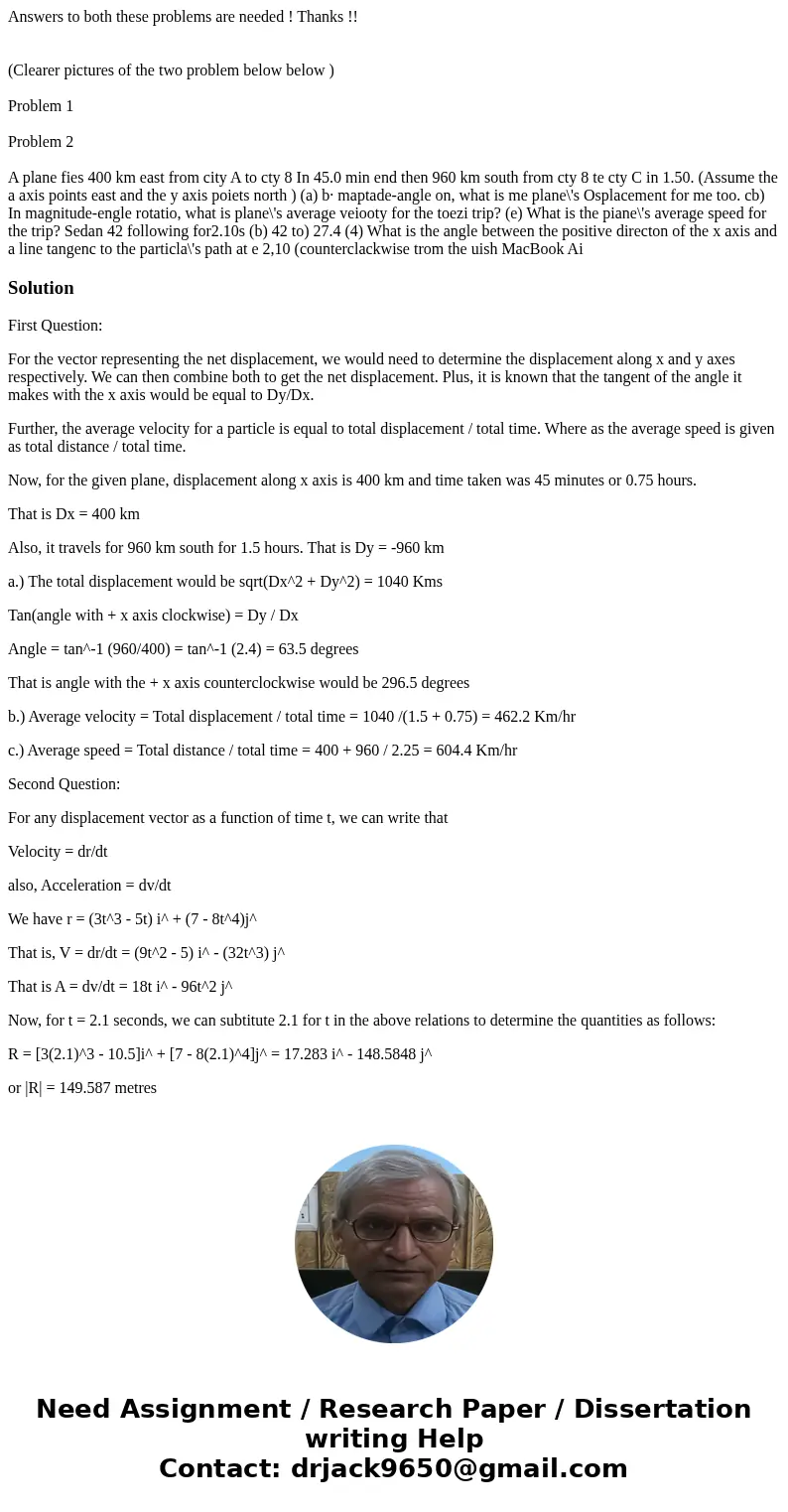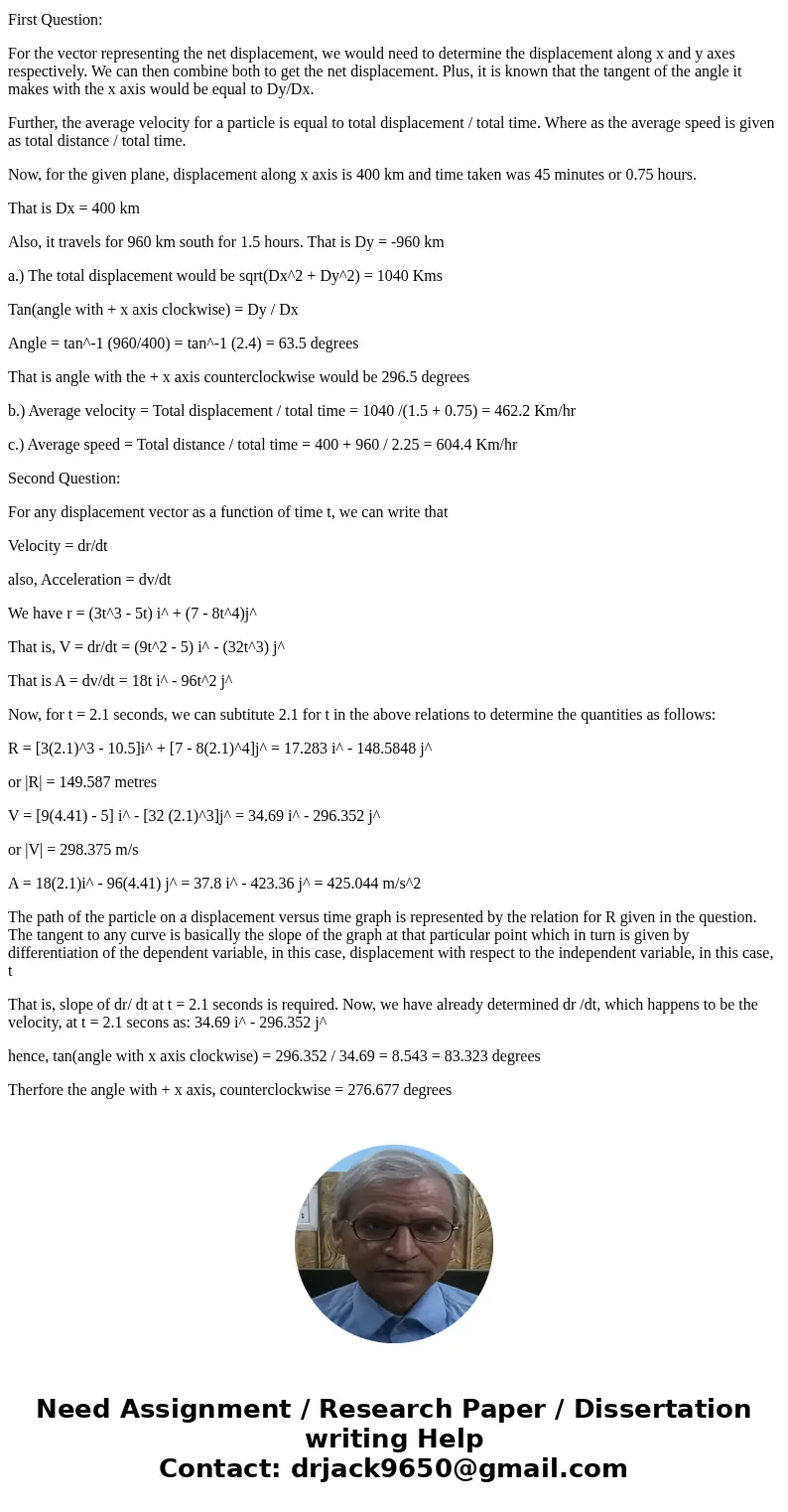Answers to both these problems are needed Thanks Clearer p
Solution
First Question:
For the vector representing the net displacement, we would need to determine the displacement along x and y axes respectively. We can then combine both to get the net displacement. Plus, it is known that the tangent of the angle it makes with the x axis would be equal to Dy/Dx.
Further, the average velocity for a particle is equal to total displacement / total time. Where as the average speed is given as total distance / total time.
Now, for the given plane, displacement along x axis is 400 km and time taken was 45 minutes or 0.75 hours.
That is Dx = 400 km
Also, it travels for 960 km south for 1.5 hours. That is Dy = -960 km
a.) The total displacement would be sqrt(Dx^2 + Dy^2) = 1040 Kms
Tan(angle with + x axis clockwise) = Dy / Dx
Angle = tan^-1 (960/400) = tan^-1 (2.4) = 63.5 degrees
That is angle with the + x axis counterclockwise would be 296.5 degrees
b.) Average velocity = Total displacement / total time = 1040 /(1.5 + 0.75) = 462.2 Km/hr
c.) Average speed = Total distance / total time = 400 + 960 / 2.25 = 604.4 Km/hr
Second Question:
For any displacement vector as a function of time t, we can write that
Velocity = dr/dt
also, Acceleration = dv/dt
We have r = (3t^3 - 5t) i^ + (7 - 8t^4)j^
That is, V = dr/dt = (9t^2 - 5) i^ - (32t^3) j^
That is A = dv/dt = 18t i^ - 96t^2 j^
Now, for t = 2.1 seconds, we can subtitute 2.1 for t in the above relations to determine the quantities as follows:
R = [3(2.1)^3 - 10.5]i^ + [7 - 8(2.1)^4]j^ = 17.283 i^ - 148.5848 j^
or |R| = 149.587 metres
V = [9(4.41) - 5] i^ - [32 (2.1)^3]j^ = 34.69 i^ - 296.352 j^
or |V| = 298.375 m/s
A = 18(2.1)i^ - 96(4.41) j^ = 37.8 i^ - 423.36 j^ = 425.044 m/s^2
The path of the particle on a displacement versus time graph is represented by the relation for R given in the question. The tangent to any curve is basically the slope of the graph at that particular point which in turn is given by differentiation of the dependent variable, in this case, displacement with respect to the independent variable, in this case, t
That is, slope of dr/ dt at t = 2.1 seconds is required. Now, we have already determined dr /dt, which happens to be the velocity, at t = 2.1 secons as: 34.69 i^ - 296.352 j^
hence, tan(angle with x axis clockwise) = 296.352 / 34.69 = 8.543 = 83.323 degrees
Therfore the angle with + x axis, counterclockwise = 276.677 degrees


 Homework Sourse
Homework Sourse